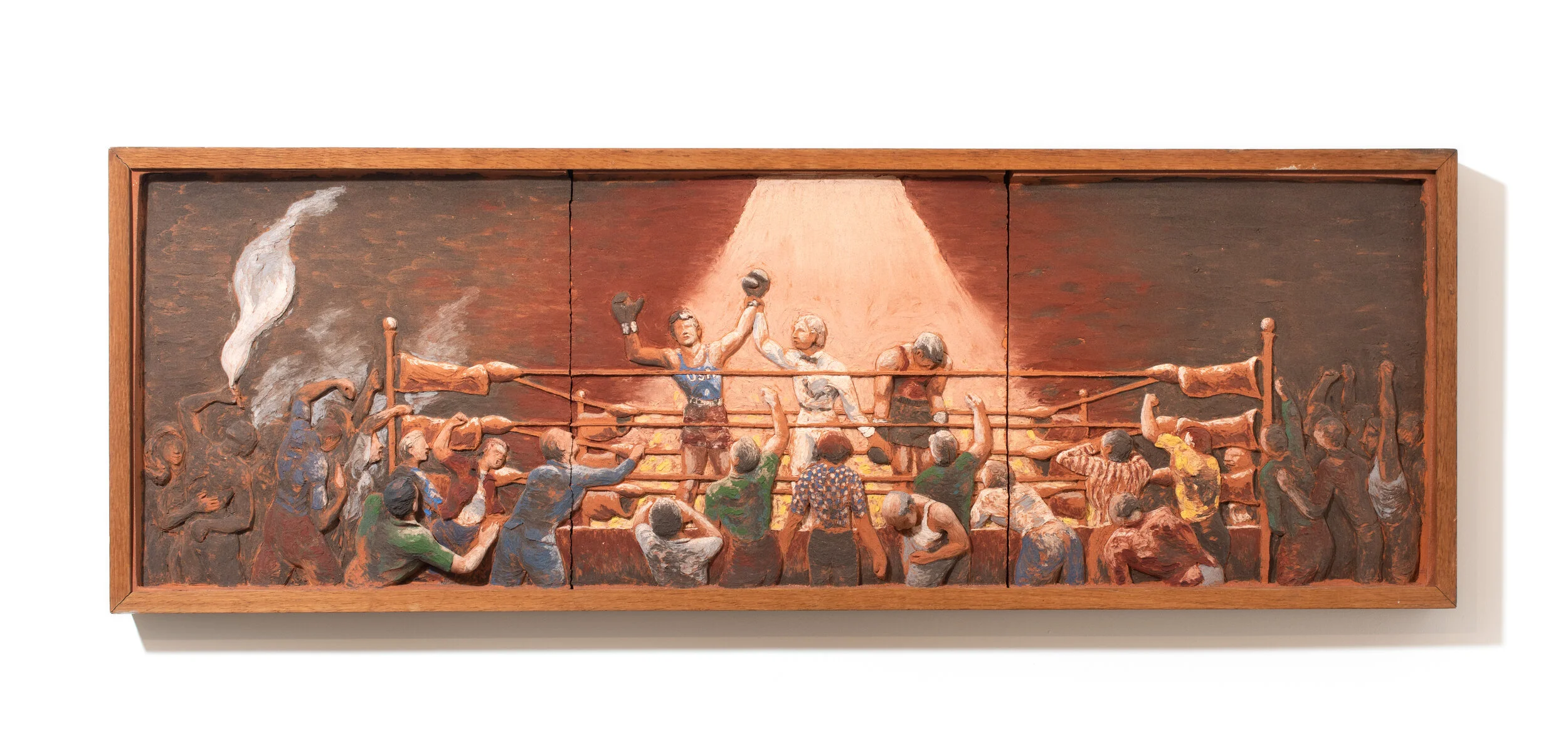Steve Rogers
works exhibitions news about








Olympic Auditorium Boxing Club
Viewing Room | November 14 - December 19, 2020
press release
Moskowitz Bayse is pleased to present Olympic Auditorium Boxing Club, a selection of terracotta tableaux from the 1980s by Los Angeles-based artist Steve Rogers. The works will be installed in our Viewing Room from November 14 through December 19, 2020, marking the artist’s first exhibition with the gallery.
Over the last five decades, Steve Rogers has explored the omnipresence of violence in American culture, at home and abroad, and its felt effects in different communities. Here, in five works from the 1980s, Rogers uses his primary medium of terracotta relief to depict boxing matches at the Olympic Auditorium in downtown Los Angeles. Focused as closely on the raucous crowd as on the action in the ring, Rogers draws a parallel between the consumption of violence as sport and the performance of violence as a latent facet of American life. Spectators jeer and argue as they fix their eyes alternately on each other, the boxers, and, occasionally, the viewer. Rogers, equipped with the camera he used to document the events in a series of photographs that served as the basis for the reliefs, occasionally situates himself in the action, too.
The artist’s handling of the scenes, free of judgement or moralization, suggests a certain documentarian-like removedness, sharply at odds with the subject matter set before him. This approach lends the work a measure of objectivity that casts violent spectacle as an unavoidable–and not entirely negative–aspect of American life. Felt in the images is the prideful community, mostly Latinx, populating the arena and reveling in the action and in one another. Rogers, who served in the United States military, is keenly aware of America’s complicated dual role as an exporter of violence abroad and a center for diasporic communities, specifically from Mexico and Central America. His America, it seems, is both a top producer of violence, and its own best customer.
Indeed, the five tableaux featured in this exhibition form a small part of Rogers’ extensive oeuvre, which includes public commissions, freestanding sculpture, murals, photography, drawing, and painting. As with much of his work, these objects examine the precarious relationship between the individual and their larger community on both macro and micro scales. In an immediate sense, the panels depict a small portion of Los Angeles’ Latinx community while focusing on larger, more innate facets of the American character and experience.
The equal treatment of the figures inside and outside the ring suggest the fluidity of place and the ways in which attitudes–towards violence, family, gender, and tradition–inform individual experiences. In his public works, Rogers points to the individual’s impact on society, a view formed by his own experiences as a member of, and, perhaps more importantly, an observer of communities. Rogers’ scenes of offhand American violence are both hyper-specific, portraying a bygone corner of Los Angeles life, and achingly timeless, ringing as deeply true now as ever before.
Steve Rogers (b. 1945) has been exhibiting in Los Angeles since the early 1980s; he has had eleven solo exhibitions at Rosamund Felsen Gallery, and has exhibited at Louis Stern Fine Arts, Praz-Devallade, and CB1 Gallery, among others. His work is included in the collections of the Los Angeles County Museum of Art (LACMA) and the Berkeley Art Museum at the University of California, among others. Rogers continues to live and work in Los Angeles.
